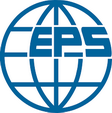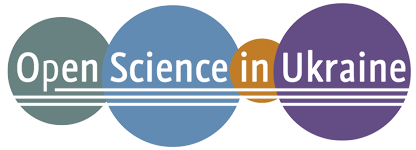Reduction of Work Function in Nanostructured Modern Cathodes for the Field Emission (Based on the Example of Tungsten Oxide W18O49 "Nanopencils")
DOI:
https://doi.org/10.15330/pcss.26.1.190-195Keywords:
Work function, field emission, nanostructured cathodesAbstract
Within the framework of a simple analytical model, an expression has been obtained that allows to calculate the work function near the tips of a nanostructured cathodes used in modern field emission devices. Numerical evaluations performed for tungsten oxide W18O49 “nanopencils” show that taking into account the considered decrease in the surface electron gas density near the nanotip leads to a decrease in the “bulk” value of the work function (~4.55 eV) by approximately 10%. This effect must be taken into account when calculating the emission current density according to the Fowler-Nordheim formula. It (as well as the electric field enhancement due to the tip geometry) leads to an increase in the emission current density and a decrease in the emission turn-on field.
References
Anatoliy Evtukh, Hans Hartnagel, Oktay Yilmazoglu, Hidenori Mimura and Dimitris Pavlidis. Vacuum Nanoelectronic Devices: Novel Electron Sources and Applications. John Wiley & Sons, Ltd., (2015); https://doi.org/10.1002/9781119037989.
M.V. Strakha, A.M. Goryachko. Surfaces with reduced work function: problems of creation and theoretical description. A review. Ukrainian Journal of Physics, 68, 551 (2023); https://doi.org/10.15407/ujpe68.8.
M.V. Strikha, D.V. Antoniuk. A theoretical model for estimating the decrease in the work function of maxenes with hydroxyl termination. Physics and Chemistry of Solid State, 23(1), 102 (2023); https://doi.org/10.15330/pccs.24.1.102-105.
A.M.Goriachko, M.V.Strikha. Nanostructured SiC as a promising material for cold electron emitters. Semiconductor physics, quantum electronics and optoelectronics, 24, 355 (2021); https://doi.org/10.15407/spqeo24.04.355.
A.M. Goryachko, D.O. Korzh, D.V. Slobodianiuk, M.V. Strikha. Field emission from promising cathodes based on nanostructured SiC: a new approach to the field enhancing factor. Physics and Chemistry of Solid State, 23, 347 (2022); https://doi.org/10.15330/pcss.23.2.347-352.
Sheng-Joue Young, Yi-Hsing Liu, and Jen-Tse Chien. Improving Field Electron Emission Properties of ZnO Nanosheets with Ag Nanoparticles Adsorbed by Photochemical Method. ACS Omega, 3, 8135 (2018); https://doi.org/10.1021/acsomega.8b01041.
M.V. Strikha, R.S. Khilinich. On the physical nature of field emission from ZnO nanosheets. Sensor Electronics and Microsystem Technologies, 21(1), 4 (2024); https://doi.org/10.18524/1815–7459.2024.1.300941.
E.W.Muller, T.T.Tsong. Field Ion Microscopy. Principles and Applications (New York, Elsevier, 1969); https://doi.org/10.1007/978-1-4614-3436-8_2.
I. Brodie, S.H. Chou, H. Yuan. A general phenomenological model for work function. Surface Science, 625, 112 (2014); https://doi.org/10.1016/j.susc.2014.03.002.
D.P. Grimmer, K. Luszczynski, N. Salibi. The Quantitative Application of Fermi-Dirac Functions to Two- and Three-Dimensional Systems, J. Low Temp. Phys., 44, 265 (1981).
J.C.Maxwell. A treatise on electricity and magnetism (Clarendon Press, Oxford, 1873); https://doi.org/10.1017/CBO9780511709333.
Zheng-Lin Li, Shao-Zhi Deng, Ning-Sheng Xu, Fei Liu, Jun Chen. Enhanced Field Emission from Large-Area Arrays of W18O49 Pencil-Like Nanostructure. Chin. Phys. Lett., 27(6), 068504 (2010); https://doi.org/10.1088/0256-307X/27/6/068504.
K. Viswanathan, K. Brandt, Ekhard Salje. Crystal structure and charge carrier concentration of W18O49. Journal of Solid State Chemistry, 36(1), 45 (1981); https://next-gen.materialsproject.org/materials/mp-907#summary.
Muhammad Saqib, Janez Jelenc, Luka Pirker, Srečo D. Škapin , Lorenzo De Pietro, Urs Ramsperger, Alexandr Knápek, Ilona Müllerová, Maja Remškar. Field emission properties of single crystalline W5O14 and W18O49 nanowires. Journal of Electron Spectroscopy and Related Phenomena, 241, 146837 (2020); https://doi.org/10.1016/j.elspec.2019.03.005.
K. Oura et all. Surface Science: An Introduction. Springer (2003). https://doi.org/10.1063/1.1825276.
Debabrata Biswas, Gaurav Singh, Rajasree Ramachandran. The cosine law of field enhancement factor variation: Generic emitter shapes. Physica E: Low dimensional Systems and Nanostructures, 109, 179 (2019); https://doi.org/10.1016/j.physe.2019.01.005.
Debabrata Biswas. A universal formula for the field enhancement factor. Physics of Plasmas, 25, 043113 (2018); https://doi.org/10.1063/1.5025694.
Downloads
Published
How to Cite
Issue
Section
License
Copyright (c) 2025 M.V. Strikha, I.Ye. Oliynyk

This work is licensed under a Creative Commons Attribution 3.0 Unported License.









